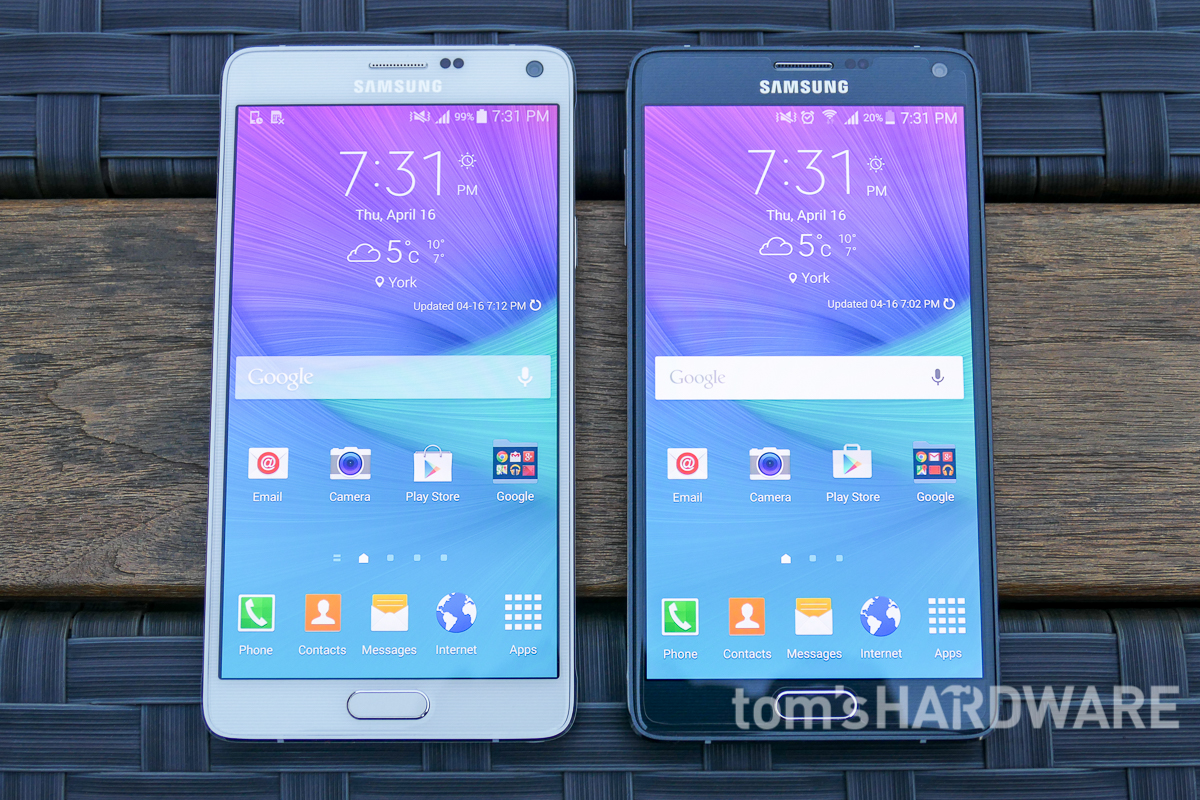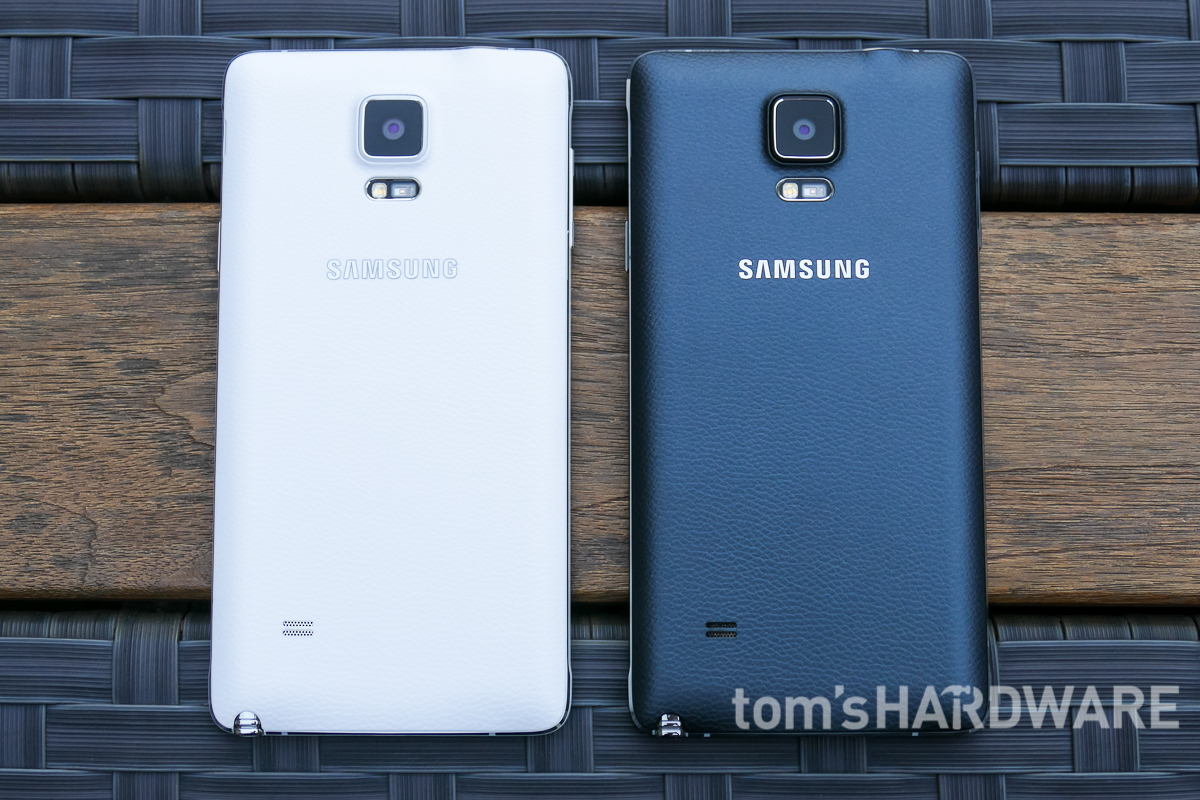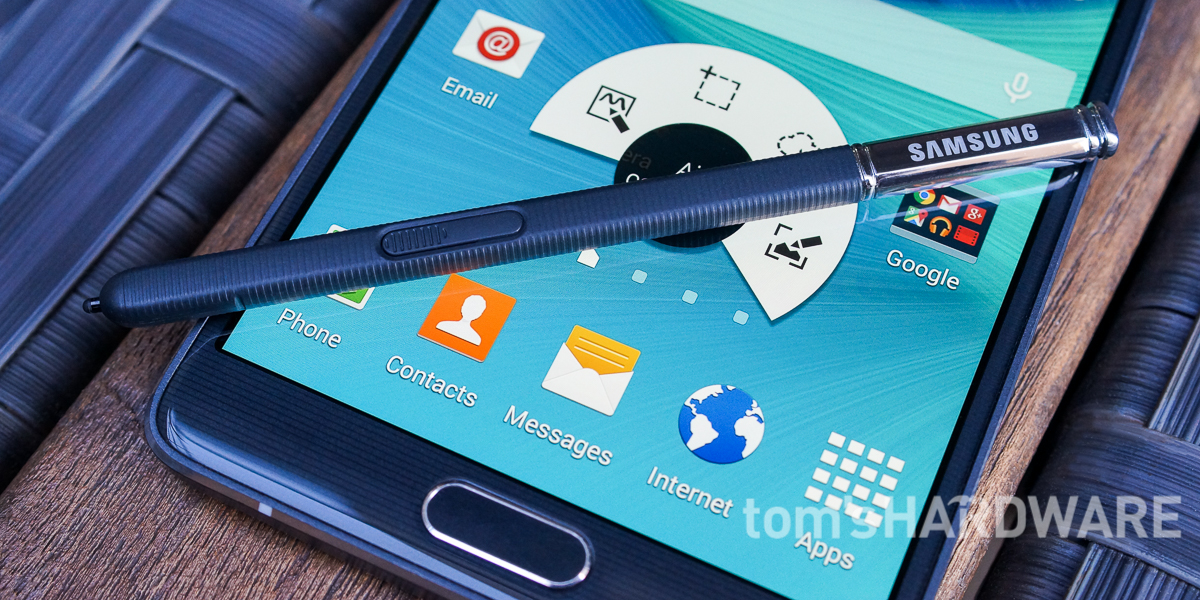Samsung Galaxy Note 4 Review
The Samsung Galaxy Note 4 sports a big, high-quality screen; large, removable battery; speedy processor; stylus; and specialized software for power users.
Why you can trust Tom's Hardware
Conclusion
Samsung’s Note series has gained a loyal following by combining premium hardware with phablet defining features. They aren’t flashy or hip or trendy. They are meant for power users and professionals who use their phones for getting real work done. Sure, you can still have fun with a Note too, but it’s not a phone designed for the masses.
The Galaxy Note 4 extends the Note tradition as a flagship phablet starting with its most recognizable feature, the 5.7-inch SAMOLED display. For this generation, Samsung bumps the resolution from a so-last-year 1080p (386 PPI) to 1440p (515 PPI). Some may question the need for so many pixels, but for AMOLED screens, whose PenTile matrices have a subpixel deficit compared to LCD panels, this is a good thing.
Looking at all of these pixels is a real joy thanks to a well-calibrated, proper sRGB display mode, making this one of the best looking screens currently on the market. We also appreciate Samsung continuing to provide multiple display modes for people who prefer the more vibrant and saturated colors that result from using an extended gamut. Choice is a good thing.
Surrounding the screen is an aluminum frame, a new material for the Note line. While the overall appearance remains similar to the Note 3, the metal frame, painted with a color-matched finish and highlighted by polished, chamfered edges, looks classy and gives the Note 4 a solid feel, free from any flexing or creaking.
The plastic back panel is still removable, providing access to the removable battery and SD card slot. A feature sure to make road warriors happy. It retains the faux leather finish of the Note 3, but the fake stitching is gone.
While no longer the fastest SoC on the block, the Snapdragon 805 packed inside is still very quick and capable. It’s paired with 3GB of RAM and 32GB of speedy internal storage. A category 4 LTE modem from Qualcomm keeps the data flowing.
The camera in the Note 4 is one of the best currently available. It's 16 MP Sony sensor with OIS delivers high-resolution images of good quality, and the phase detection autofocus is very fast. We occasionally saw small misses in white balance leading to images with a slight green cast, and the iPhone 6 Plus still holds a small edge in some lower-light scenarios. However, Samsung is the current leader when it comes to HDR, providing a live preview onscreen and producing great results with virtually no processing lag.
Get Tom's Hardware's best news and in-depth reviews, straight to your inbox.
S Pen is another notable feature. Effectively doubling the number of pressure sensitivity levels from the Note 3, the S Pen delivers a smoother and more natural writing experience. The Pen is more than just a simple stylus, however. The integrated Wacom digitizer enables additional features like being able to hover the pen over the screen to show context sensitive menus. TouchWiz also makes good use of the pen via the Air Command menu that opens when it’s removed from the silo, providing quick access to common tasks, and functionality is extended through apps such as S Note and integrated OCR.
The Note 4 now runs Android Lollipop, but doesn’t use the more refined TouchWiz UI that comes with the new Galaxy S6. Although there are still a few rough edges when it comes to UI design and functionality, Samsung provides additional software features that make good use of the bigger screen. The ability to shrink the display size, place input controls within easy reach, and add shortcuts to the side key panel make it possible to still interact with the phone using a single hand when necessary. Multi Window is great for multi-tasking and receives some usability improvements for this generation.
The Note 4 is a great phone, but we do have a few minor quibbles. Despite the fast processor, browser scrolling and UI interactions still exhibit some stuttering due to Samsung’s conservative CPU governor settings. This does improve battery life though, so this might not be a negative depending on your priorities. The Note 4 is also more susceptible to thermal throttling than other phones when the GPU is pushed hard. Samsung needs to do a better job using the metal chassis to spread and dissipate heat. The rear mounted external speaker is less than ideal, reducing audio quality and producing muffled sound when sitting on a table.
Despite these few minor flaws, the Note 4 is a powerful phone, whose hardware and software features set it apart from all the other phablets flooding the market. For this reason, the Samsung Galaxy Note 4 earns our Editors’ Choice award.
Tim Ferrill is a Contributing Writer for Tom's Hardware. Follow him on Twitter.
Follow Tom's Hardware on Twitter, Facebook and Google+.


